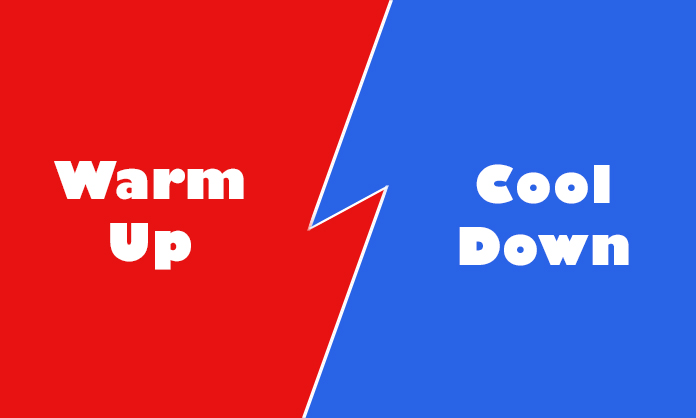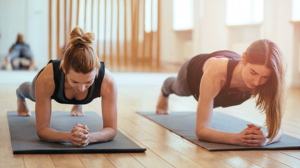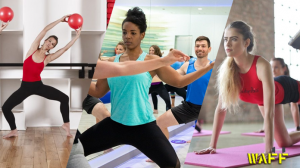Table of Contents
Exercising without the proper warm-up or cool-down period can lead to pain, soreness, and even injury. Muscle strengthening exercises are not the only physical activities that need a Warm-Up and Cool-Down period. Picture a group of runners where some warm-up before a run while others do not. Those who do not warm up may find an increase in muscle soreness over the following few days.
Warming up also increases the flexibility of your muscles and prepares them by bringing oxygen to the muscles being used. Have you ever started running quickly, only to be stopped by a pain in your side? This is called oxygen debt. Your muscles did not have a chance to warm up enough prior to the run in order to bring sufficient oxygen to the area. Whenever a muscle lacks oxygen, pain results. Similarly, cooling down with a gentle stretch after exercising is important to reduce muscle stiffness and pain.
What is Warm-Up?
A warm-up (as it relates to physical activity and exercise) is any activity, either physical or mental, that helps to prepare an individual for the demands of their chosen sport or exercise.
Here we write a whole article aboutWhat is Warming Up: And Why You Should Do & Benefits of It
Why Warm Up?
Warming up prior to any physical activity does a number of beneficial things, butthe main purpose of the warm-up is to prepare the body and mind for strenuous activity.
- One of the ways it achieves this is byincreasing the body’s core temperature, while also increasing the body’s muscle temperature. By increasing muscle temperature you’re helping to make the muscles loose, supple, and pliable.
- An effective warm-up also has the effect of increasing both your heart rate and your respiratory rate. This increases blood flow, which in turn increases the delivery of oxygen and nutrients to the working muscles.
All this helps to prepare the muscles, tendons, and joints for more strenuous activity.
Types of Warm-Up
General Warm-Up
General warm-up is usually performed in all types of activities. This type of warm-up includes jogging, running, jumping, stretching, calisthenics striding, wind sprints, and other general or lite exercises. It increases coordinative abilities, and flexibility of muscles and joints. It also improves muscle tone. The duration of general warming-up depends upon the nature of work to be performed.
Specific Warm-Up
In specific warming- up, exercises are done with implements. Special exercises are performed which have a direct relationship with the activity to be done. These specific exercises are performed after the activities of general warming-up.
The specific type of warming-up differs from activity to activity which means game to game, For example, a sprinter may take a few starts and run for a short distance before the actual competition, A basketball player may practice for lay-up shots or free throws practice for lay-up shots or free throws before the competition, A cricket player may practice for Bowling, catching, batting, fielding before the match, etc.
This type of warming-up improves coordinative abilities. In fact, in specific warming-up, the main stress is laid on the practice of various skills that are to be performed in the game.
Stretching
The Stretching is best performed after your muscles are warm, so only stretch after your general warm-up. Stretching muscles when they are cold and less pliable may lead to a tear. Stretching during a warm-up can include some slow, controlled circling movements at key joints, such as shoulder rolls, but the stretches should not be forced or done at a speed that may stretch the joints, muscles, and tendons beyond their normal length.
Benefits of Warm-Up
Improved Performance
Warming up improves your athletic performance in the following ways
Improved Blood Flow
Warming up for 10 minutes with an easygoing activity improves blood flow to your skeletal muscles, and opens up blood capillaries. Your blood carries the oxygen needed for your muscles to function, so increasing your blood flow is one of the best things you can do to set your muscles up for a workout.
Improved Oxygen Efficiency
When you do a warm-up exercise, oxygen is released from your blood more readily, and at higher temperatures. Your muscles demand higher amounts of oxygen while exercising, so it’s important to make this oxygen more available through a warm-up activity.
Faster Muscle Contraction/Relaxation
Warming up with physical activity raises your body temperature, which in turn, improves your nerve transmission and muscle metabolism. The end result? Your muscles will perform faster and more efficiently.
Injury Prevention
Warming up prevents injuries by loosening your joints, and improving blood flow to your muscles — making your muscles less likely to rip, tear, or twist in a harmful way during your workout. Stretching also helps prepare your muscles for the physical activities you’re about to perform.
Mental Preparation
A side benefit of warming up is that your brain will become focused on your body and your physical activity as you go through the process. This focus will carry over into your training session to help you to improve your technique, coordination, and skill.
What is Cool Down?
Cooling down is an easy exercise, done after more intense activity, to allow the body to gradually transition to a resting or near-resting state.
Benefits of Cool Down
Recovery
After intense exercise, lactic acid builds up within your system, and it takes time for your body to clear it out. Cooling down exercises (such as stretches) can aid this process of releasing and removing lactic acid, helping to speed up your body’s recovery post-workout.
Reducing DOMS (Delayed Onset Muscle Soreness)
While muscle soreness is to be expected after exercise, a significant amount of DOMS is very uncomfortable and can prevent you from exercising in the future. A study performed by California State University found that moderate-intensity cycling after strength exercise helped to reduce DOMS. Cooling down after exercise helps to alleviate excessive muscle soreness, keeping you more comfortable and allowing your body to bounce back before your next workout.







